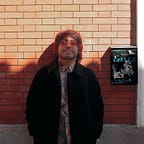How might we transform the end-to-end experience in public hospitals? — Case Study
Public hospitals are really important to us all. They’re places where everyone can get the help they need when they’re sick. But, sometimes, going to the hospital can be confusing and stressful. There are a lot of steps to follow, procedures that are hard to understand, and it’s easy for patients to feel lost.
We started this project with a big question: “How might we transform the end-to-end experience in public hospitals?” We didn’t just want to look at how doctors and nurses give treatment, but we also wanted to think about the previous moment a patient walks into the hospital, more like to know their journey prior to that.
In this story, we’ll share how we tried to think about the hospital experience in a new way. We used some special design methods, listened to patients’ stories, and tried out our ideas. Our goal was to come up with ideas that would help patients in the first stages of their hospital visit.
Up next, you’ll get to know the team who worked hard on this exciting project to make the experience in public hospitals better for everyone.
Our Mission
Our big challenge was to figure out: “How can we change the whole hospital experience for patients using a mobile app?”
Aiming High
We had a few important things we wanted to achieve:
- Find out who would use our app.
- Understand what things make their hospital visit better or worse.
- Figure out how we can make our app really useful for people visiting public hospitals.
Our Plan of Action
To achieve these things, our team had a four-step plan: understanding our users, defining the problem, coming up with ideas, and creating the first version of our app.
Getting to Know Our Users — Empathising
The first step was understanding our users. We needed to know who would use our app, what issues they face, and what they need but aren’t getting. This is why we started with some research about our users.
User Research
During this part, we figured out what we needed to know, what information we already had, who we needed to talk to, how we could get in touch with them, and what questions we should ask to help us achieve our goals.
To set up our interviews, we first came up with some questions. We then voted to decide which ones to use.
We made a few changes along the way to make sure we would get the best information, and this is what we ended up with:
From all the information we gathered, we used a method called dot voting to decide which areas were the most important to focus on.
But before we moved on to defining our problem, we wanted to make sure we really understood what issues needed to be solved. That’s where an Empathy Map came in handy. It helped us get a clear picture of what people go through when they’re in the hospital.
User Persona
By putting together our Affinity Map and Empathy Map, we created a User Persona — a kind of made-up person who stands in for most of the people who would use our app.
User Journey Map
Then, we came up with a User Journey Map, which is a visual representation that illustrates the steps a user takes when interacting with a product or service, capturing their experiences, emotions, and pain points along the way. And that helped us to spot places where we could make their experience better.
Problem Statement
Everything you’ve seen so far in this story was made in the group, and the problem statement was no different.
We created a combination of our ideas.
After we had clearly outlined our challenge, we started to sketch lots of different solutions, using a fun technique called the Crazy 8 method.
Low-fidelity Wireframes
Based on our previous crazy ideas, we shaped the following first drafts of our app’s design.
With our app, you can quickly set up a visit to your closest or preferred hospital in just 5 easy steps. Plus, it’s a breeze to check things like your medication schedule or test results — they’re all right there at your fingertips.
We put our app design to the test, focusing on what could make it even better — always thinking from our users’ s point of view!
Wrapping up
Wicked problems are tricky because they’re complex and usually don’t have just one answer. Our goal to create the perfect product for Sara, our user persona, led us to imagine a digital solution that could be pretty complicated to make and would be like many different products all rolled into one. This experience taught me how important it is to really focus on the main issue and decide what problem we want to tackle.
Lessons learned
It was very interesting working on every part of this project. I learned just how vital research is when you’re creating something for lots of users. It’s not only crucial to ask the right questions, but also to ask extra, open-ended questions that can give you even deeper insights. Plus, I saw how important it is to work as a team. Everyone brought different skills and ideas to the table, which really helped us think big and get the project done on time.
